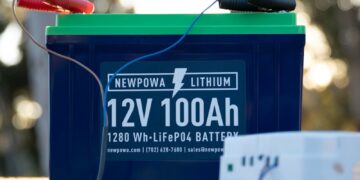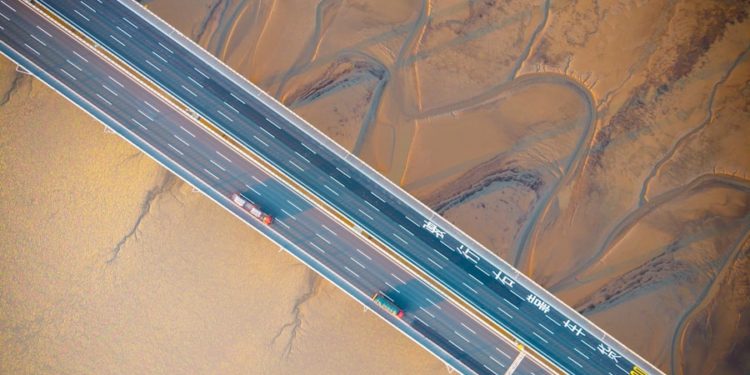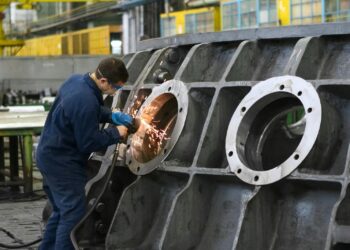By ECOBUSINESSNEWS
The renewable energy revolution is in full swing, propelled by technological breakthroughs, plummeting costs, and a global race to slash carbon emissions. In 2024, clean energy investments soared past $2.3 trillion, with renewables now supplying over 30% of global electricity, according to the International Energy Agency (IEA). Beyond curbing climate change, countries are tapping renewables to boost energy security, reduce fossil fuel dependence, and spark economic growth. From sun-scorched deserts to volcanic terrains, innovative projects are redefining what’s possible.
Dive into five transformative renewable energy initiatives worldwide, each blending cutting-edge technology, bold vision, and a commitment to a greener tomorrow. These projects don’t just generate power—they’re reshaping economies, communities, and the planet’s future.
Interactive Map Notice: Pan and zoom to explore locations; hold Ctrl, click, and drag to adjust perspective. Toggle terrain or overhead views for optimal visuals.
Noor Ouarzazate Solar Complex
Location: Sahara Desert, Morocco
Capacity: 580 MW
In Morocco’s sun-drenched Sahara, the Noor Ouarzazate Solar Complex spans 7,400 acres, making it one of the world’s largest solar facilities. This engineering marvel uses concentrated solar power (CSP), where thousands of mirrors focus sunlight onto a central receiver to heat molten salt, which then generates steam to drive turbines. Unlike traditional photovoltaic panels, CSP’s thermal storage allows power generation up to 7 hours after sunset, ensuring a stable energy supply.
Financing such ambitious projects in emerging markets isn’t easy. “High perceived risks often deter private investors in regions like North Africa,” says Lisa Sachs, director of Columbia University’s MS in Climate Finance program. The Noor complex overcame this hurdle with $2.6 billion in funding from the African Development Bank, World Bank, and others. Sachs stresses that unlocking private capital requires policy reforms to reduce investment barriers, ensuring equitable clean energy access globally.
Powering 1.1 million homes and cutting 760,000 tons of CO2 annually, Noor is a beacon of sustainable development. It’s also a job creator, employing over 2,000 locals during construction and hundreds in ongoing operations. Morocco’s goal? 52% renewable energy by 2030. Noor is leading the charge.
Watch: BBC’s Inside the World’s Largest Solar ‘Mirror’ Plant
Learn More: Morocco’s Renewable Energy Strategy
Three Gorges Dam
Location: Yangtze River, Hubei, China
Capacity: 22.5 GW
Spanning 2.3 kilometers across the Yangtze River, China’s Three Gorges Dam is the world’s largest hydropower plant and a titan of clean energy. Its 32 massive turbines churn out enough electricity to power 20 million households, reducing coal use by 31 million tons annually and cutting CO2 emissions by 83 million tons, per China’s National Energy Administration. Beyond energy, the dam mitigates floods, improves river navigation, and secures water supplies.
But its scale comes with trade-offs. Construction displaced 1.3 million people, submerged 13 cities and 1,350 villages, and disrupted aquatic ecosystems. “Megaprojects like Three Gorges highlight the tension between decarbonization and social-environmental costs,” says Sagatom Saha, an energy policy expert at Columbia University. Future hydropower must prioritize community engagement and ecological restoration to avoid similar controversies.
Despite challenges, the dam’s output—equivalent to 15 nuclear power plants—solidifies its role in China’s push for 40% renewable energy by 2035. It’s a testament to what’s possible when ambition meets engineering prowess.
Watch: TED-Ed’s Building the World’s Largest Power Plant
Explore: China’s Hydropower Expansion
Alta Wind Energy Center
Location: Mojave Desert, California, USA
Capacity: 1.55 GW
Nestled in California’s Tehachapi Mountains, the Alta Wind Energy Center is a wind power titan, with 600 turbines generating enough electricity for 450,000 homes. It offsets CO2 emissions equivalent to removing 446,000 cars yearly, per the U.S. Environmental Protection Agency. The 2016 Tehachapi Renewable Transmission Project connects Alta’s clean energy to urban grids, supporting up to 4.5 GW of renewable power.
Scaling wind energy isn’t all smooth sailing. Local zoning laws, lengthy permitting processes, and community pushback often stall projects. “Over 300 U.S. municipalities enforce restrictive wind turbine setbacks,” notes Matthew Eisenson of the Sabin Center for Climate Change Law. A federal pause on new wind approvals, announced January 20, 2025, citing environmental reviews, adds uncertainty. Yet, Alta’s success—creating 1,500 jobs and powering California’s 100% clean energy goal by 2045—shows wind’s potential when hurdles are cleared.
Watch: Largest Wind Farms in the U.S.
Read: California’s Clean Energy Roadmap
Yamakura Floating Solar Plant
Location: Chiba Prefecture, Japan
Capacity: 13.7 MW
Japan’s Yamakura Floating Solar Plant is a masterclass in innovation for land-scarce regions. Spanning 18 hectares of a reservoir, its 50,000 solar panels generate power for 5,000 homes. Floating solar offers unique perks: water cools panels for up to 10% higher efficiency, reduces reservoir evaporation, and sidesteps land-use conflicts. “From parking lots to ponds, solar’s versatility is reshaping energy landscapes,” says Gernot Wagner, a climate economist at Columbia Business School.
The World Bank estimates that covering just 10% of suitable global water bodies with floating solar could yield 400 GW—enough to power 300 million homes. Japan, with limited flat land, is pioneering this approach, aiming for 35% renewable energy by 2030. Yamakura’s model is inspiring projects from India to Brazil, proving that creativity can overcome geographic constraints.
Watch: Kyocera’s Floating Solar at Yamakura Dam
Discover: Global Floating Solar Potential
Hellisheiði Geothermal Plant
Location: Hengill, Iceland
Capacity: 303 MW (plus 400 MW thermal for heating)
Iceland’s Hellisheiði Power Station harnesses the island’s volcanic geology to produce electricity and heat for Reykjavík. Its CarbFix project is a game-changer, capturing 12,000 tons of CO2 annually and injecting it into basalt rock, where it mineralizes into stable carbonates within two years. Nearby, the Orca plant pioneers direct air capture, removing 4,000 tons of CO2 yearly.
“Geothermal with carbon storage could be a cornerstone of net-zero goals,” says geologist Joshua Murray. Scaling CarbFix globally could sequester billions of tons of CO2, but it requires investment in research and infrastructure. Iceland’s near-100% renewable grid, powered largely by geothermal and hydropower, makes Hellisheiði a blueprint for integrating clean energy with carbon capture.
Watch: BBC’s Hidden Carbon Capture Plant
Learn: CarbFix and Carbon Storage
The Renewable Energy Horizon
The IEA forecasts a near-tripling of global renewable capacity by 2030, driven by advancements in solar, wind, hydropower, geothermal, and energy storage. Costs are plummeting—solar and wind are now cheaper than coal in many regions—while innovations like floating solar and carbon capture are expanding possibilities. Governments and corporations increasingly see renewables as a triple win: tackling climate change, boosting economies, and securing energy independence.
Yet, challenges remain. Financing must scale to meet the $4 trillion annual investment needed for net-zero by 2050. Policy reforms, streamlined permitting, and community engagement are critical to accelerate deployment. As ECOBUSINESSNEWS highlights, these trailblazing projects light the way toward a sustainable, equitable energy future. The question isn’t whether renewables will dominate—it’s how fast we can make it happen.
Tags: renewable energy, solar power, wind energy, hydropower, geothermal, carbon capture, sustainability, climate finance, clean energy transition
Related Articles:



















